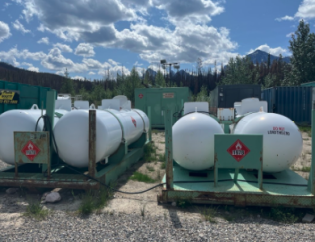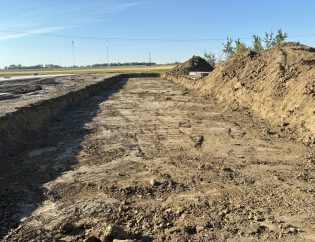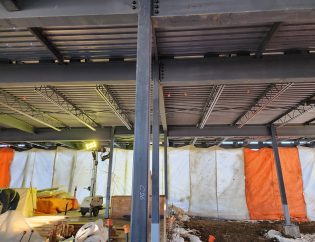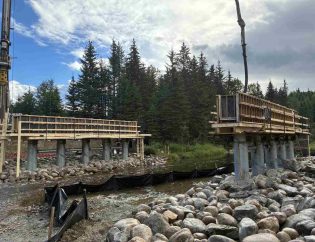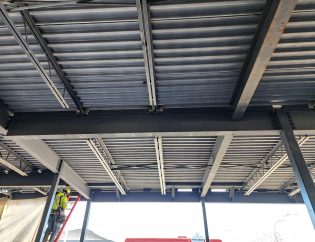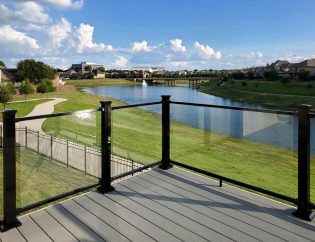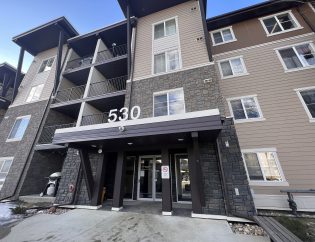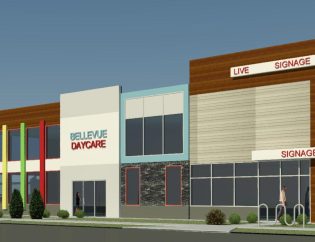The Importance of a Strong Foundation
Every reliable structure begins with a foundation designed to support the full weight and purpose of the building above it. Long before finishes, framing, or interiors take shape, it is the foundation that determines whether a project will stand strong for decades. Yet even with careful planning and accurate drawings, construction conditions can present challenges that affect the quality of foundation footings. Small deficiencies that appear during forming, pouring, or backfilling can grow into significant structural concerns if they are not identified early. At MR Engineering, the focus is on rigorous assessment, precise correction, and long-term stability that protects both the integrity of the structure and the investment behind it.
What Footing Deficiencies Look Like
Foundation footing deficiencies occur when the built footing does not meet the thickness, bearing conditions, or material quality required by design. The footing is responsible for transferring structural loads into the soil below, which means any compromise to its shape, strength, or consistency affects the performance of the entire building. Cracks, voids, and honeycombing can reduce the capacity of concrete to carry loads.
In some cases, the footing has been formed or poured at a thickness lower than specified in the approved drawings. Other projects show step footings built with heights or run lengths that exceed acceptable standards, which creates uneven distribution of weight along the foundation. There are also instances where portions of the footing are not fully resting on engineered soil, which introduces the risk of settlement and future cracking. Improper placement of weeping tiles or drainage systems can allow moisture to collect around the footing, creating long-term movement or frost-related issues.
Why Early Action is Critical
While these problems may appear minor at first glance, they represent issues that can grow into costly repairs if left untreated. A compromised footing does not simply impact the base of the structure. It influences the performance of walls, slabs, floors, and even exterior grading over time. This is why MR Engineering approaches footing deficiencies with careful investigation and a clear, methodical plan for correction.
The process begins with a detailed inspection by MR Engineering’s structural team. Engineers examine the footings in their as-built condition and compare them against the approved construction drawings. Each deficiency is photographed and measured, with field notes documenting the extent and potential impact of the issue. This stage of the process ensures clarity for both the engineering team and the client, since a complete record of existing conditions forms the foundation of the repair design.
Once the deficiencies are clearly identified, surface preparation begins. Any unsound or loose concrete is removed to expose solid material. If reinforcing steel is visible within the affected area, it is cleaned with a wire brush until it reaches bright metal. This level of surface preparation is essential because it ensures proper bonding between the original footing and the new repair material. Without a clean, structurally sound interface, new concrete or grout cannot achieve the strength needed for long-term performance.
When the footing has been prepared, MR Engineering proceeds with precision repairs. Voids, honeycombing, and other material gaps are filled using non-shrink cementitious grout. This product is selected because it cures to a strength comparable to the surrounding concrete and does not shrink during the curing process, which prevents new gaps from forming. In situations where the footing thickness is less than what the drawings require, new concrete is added to achieve the proper depth. Reinforcement is installed using fifteen millimetre dowels spaced at two-foot intervals, creating a mechanical connection between the original footing and the new concrete. This ensures that the footing acts as a single structural unit, rather than a patched section that could behave differently under load.
Correcting Step Footings
Where step footings have been built with incorrect rise or run lengths, MR Engineering reconstructs the steps to meet the design standard. This typically involves saw-cutting the existing step, removing any non-compliant sections, and rebuilding it to a consistent twenty-four-inch rise and run. Additional reinforcing bars are added as needed to ensure durability and proper load transfer. Rebuilding step footings correctly prevents uneven load paths and reduces the risk of future cracking or structural movement.
Drainage and bearing conditions are also critical parts of the repair process. If sections of the footing are not fully supported by soil, engineered material is placed beneath the concrete to establish consistent bearing across the entire length of the footing. This correction prevents differential settlement, which can create cracks in walls and slabs above. Weeping tiles that were installed too high or too close to the footing are relocated to the correct depth to promote proper water drainage. Adequate drainage reduces the risk of saturation, frost heave, and moisture-related movement. Proper footing support and drainage work together to create a stable base that is resistant to environmental changes.
Quality Control Throughout
Quality control is present throughout the repair process. MR Engineering’s geotechnical personnel are often on site to test concrete strength, verify compaction, and ensure compliance with structural drawings. All repairs are completed to meet municipal standards and requirements, and each correction is reviewed to confirm that it meets the engineer’s intended performance criteria. This careful oversight ensures that the repaired footing does not simply meet the minimum standard but aligns with the level of stability expected for long-term use.
These procedures matter because a strong foundation protects every part of the structure above it. When footing repairs are completed accurately and with attention to detail, the result is a building that performs as intended, without the risk of uneven floors, wall cracks, or long-term structural movement. Clients also benefit from reduced maintenance costs, fewer warranty claims, and improved project timelines. Addressing deficiencies early prevents significant disruption later on and keeps construction moving forward safely.
MR Engineering has worked with builders, contractors, and property owners across Alberta to resolve footing issues in both residential and commercial settings. These experiences demonstrate that proactive assessments create safer projects and fewer delays. Whether the repair involves a single footing section or an entire foundation, the goal remains the same. Every structure deserves a base that is reliable, stable, and built to last. By combining engineering expertise with hands-on inspection and precise correction methods, MR Engineering provides confidence where it matters most.
Commitment to Long-Term Stability
A strong foundation is not simply a component of construction. It represents a commitment to safety, precision, and the future life of the building. MR Engineering upholds that commitment on every project, ensuring that the strength beneath each structure is as dependable as the work completed above it.
Contact Us
If you are facing footing concerns or require a structural inspection, the MR Engineering team is ready to assist with accurate assessment and reliable repair solutions.
Edmonton Office: #112, 1803-91 Street SW, Edmonton, AB T6X 0W8
Phone: 780-807-0016
Email: info@mrengineering.ca
Website: www.mrengineering.ca
Calgary 1925 18 Ave NE #115, Calgary, AB T6X 0W8
Phone: (587) 709-9181
Email: info@mrengineering.ca
Website: www.mrengineering.ca
Every reliable structure begins with a foundation designed to support the full weight and purpose of the building above it. Long before finishes, framing, or interiors take shape, it is the foundation that determines whether a project will stand strong for decades. Yet even with careful planning and accurate drawings, construction conditions can present challenges that affect the quality of foundation footings. Small deficiencies that appear during forming, pouring, or backfilling can grow into significant structural concerns if they are not identified early. At MR Engineering, the focus is on rigorous assessment, precise correction, and long-term stability that protects both the integrity of the structure and the investment behind it.
What Footing Deficiencies Look Like
Foundation footing deficiencies occur when the built footing does not meet the thickness, bearing conditions, or material quality required by design. The footing is responsible for transferring structural loads into the soil below, which means any compromise to its shape, strength, or consistency affects the performance of the entire building. Cracks, voids, and honeycombing can reduce the capacity of concrete to carry loads.
In some cases, the footing has been formed or poured at a thickness lower than specified in the approved drawings. Other projects show step footings built with heights or run lengths that exceed acceptable standards, which creates uneven distribution of weight along the foundation. There are also instances where portions of the footing are not fully resting on engineered soil, which introduces the risk of settlement and future cracking. Improper placement of weeping tiles or drainage systems can allow moisture to collect around the footing, creating long-term movement or frost-related issues.
Why Early Action is Critical
While these problems may appear minor at first glance, they represent issues that can grow into costly repairs if left untreated. A compromised footing does not simply impact the base of the structure. It influences the performance of walls, slabs, floors, and even exterior grading over time. This is why MR Engineering approaches footing deficiencies with careful investigation and a clear, methodical plan for correction.
The process begins with a detailed inspection by MR Engineering’s structural team. Engineers examine the footings in their as-built condition and compare them against the approved construction drawings. Each deficiency is photographed and measured, with field notes documenting the extent and potential impact of the issue. This stage of the process ensures clarity for both the engineering team and the client, since a complete record of existing conditions forms the foundation of the repair design.
Once the deficiencies are clearly identified, surface preparation begins. Any unsound or loose concrete is removed to expose solid material. If reinforcing steel is visible within the affected area, it is cleaned with a wire brush until it reaches bright metal. This level of surface preparation is essential because it ensures proper bonding between the original footing and the new repair material. Without a clean, structurally sound interface, new concrete or grout cannot achieve the strength needed for long-term performance.
When the footing has been prepared, MR Engineering proceeds with precision repairs. Voids, honeycombing, and other material gaps are filled using non-shrink cementitious grout. This product is selected because it cures to a strength comparable to the surrounding concrete and does not shrink during the curing process, which prevents new gaps from forming. In situations where the footing thickness is less than what the drawings require, new concrete is added to achieve the proper depth. Reinforcement is installed using fifteen millimetre dowels spaced at two-foot intervals, creating a mechanical connection between the original footing and the new concrete. This ensures that the footing acts as a single structural unit, rather than a patched section that could behave differently under load.
Correcting Step Footings
Where step footings have been built with incorrect rise or run lengths, MR Engineering reconstructs the steps to meet the design standard. This typically involves saw-cutting the existing step, removing any non-compliant sections, and rebuilding it to a consistent twenty-four-inch rise and run. Additional reinforcing bars are added as needed to ensure durability and proper load transfer. Rebuilding step footings correctly prevents uneven load paths and reduces the risk of future cracking or structural movement.
Drainage and bearing conditions are also critical parts of the repair process. If sections of the footing are not fully supported by soil, engineered material is placed beneath the concrete to establish consistent bearing across the entire length of the footing. This correction prevents differential settlement, which can create cracks in walls and slabs above. Weeping tiles that were installed too high or too close to the footing are relocated to the correct depth to promote proper water drainage. Adequate drainage reduces the risk of saturation, frost heave, and moisture-related movement. Proper footing support and drainage work together to create a stable base that is resistant to environmental changes.
Quality Control Throughout
Quality control is present throughout the repair process. MR Engineering’s geotechnical personnel are often on site to test concrete strength, verify compaction, and ensure compliance with structural drawings. All repairs are completed to meet municipal standards and requirements, and each correction is reviewed to confirm that it meets the engineer’s intended performance criteria. This careful oversight ensures that the repaired footing does not simply meet the minimum standard but aligns with the level of stability expected for long-term use.
These procedures matter because a strong foundation protects every part of the structure above it. When footing repairs are completed accurately and with attention to detail, the result is a building that performs as intended, without the risk of uneven floors, wall cracks, or long-term structural movement. Clients also benefit from reduced maintenance costs, fewer warranty claims, and improved project timelines. Addressing deficiencies early prevents significant disruption later on and keeps construction moving forward safely.
MR Engineering has worked with builders, contractors, and property owners across Alberta to resolve footing issues in both residential and commercial settings. These experiences demonstrate that proactive assessments create safer projects and fewer delays. Whether the repair involves a single footing section or an entire foundation, the goal remains the same. Every structure deserves a base that is reliable, stable, and built to last. By combining engineering expertise with hands-on inspection and precise correction methods, MR Engineering provides confidence where it matters most.
Commitment to Long-Term Stability
A strong foundation is not simply a component of construction. It represents a commitment to safety, precision, and the future life of the building. MR Engineering upholds that commitment on every project, ensuring that the strength beneath each structure is as dependable as the work completed above it.
Contact Us
If you are facing footing concerns or require a structural inspection, the MR Engineering team is ready to assist with accurate assessment and reliable repair solutions.
Edmonton Office: #112, 1803-91 Street SW, Edmonton, AB T6X 0W8
Phone: 780-807-0016
Email: info@mrengineering.ca
Website: www.mrengineering.ca
Calgary 1925 18 Ave NE #115, Calgary, AB T6X 0W8
Phone: (587) 709-9181
Email: info@mrengineering.ca
Website: www.mrengineering.ca
